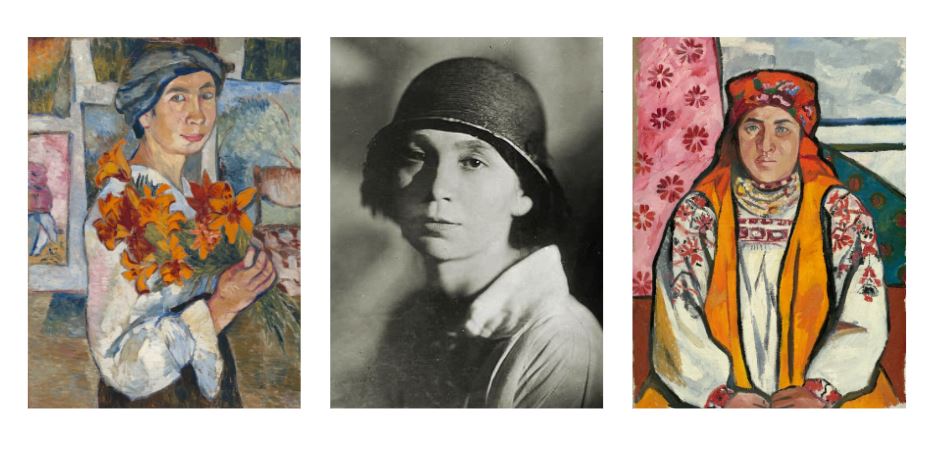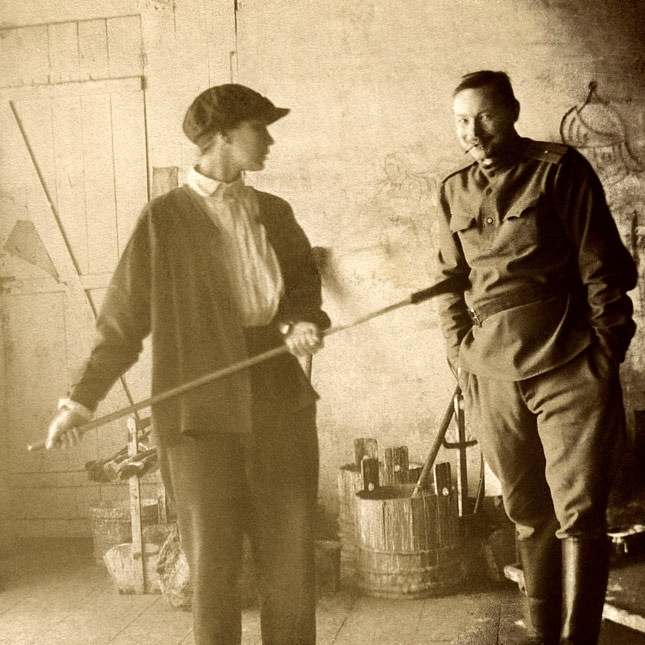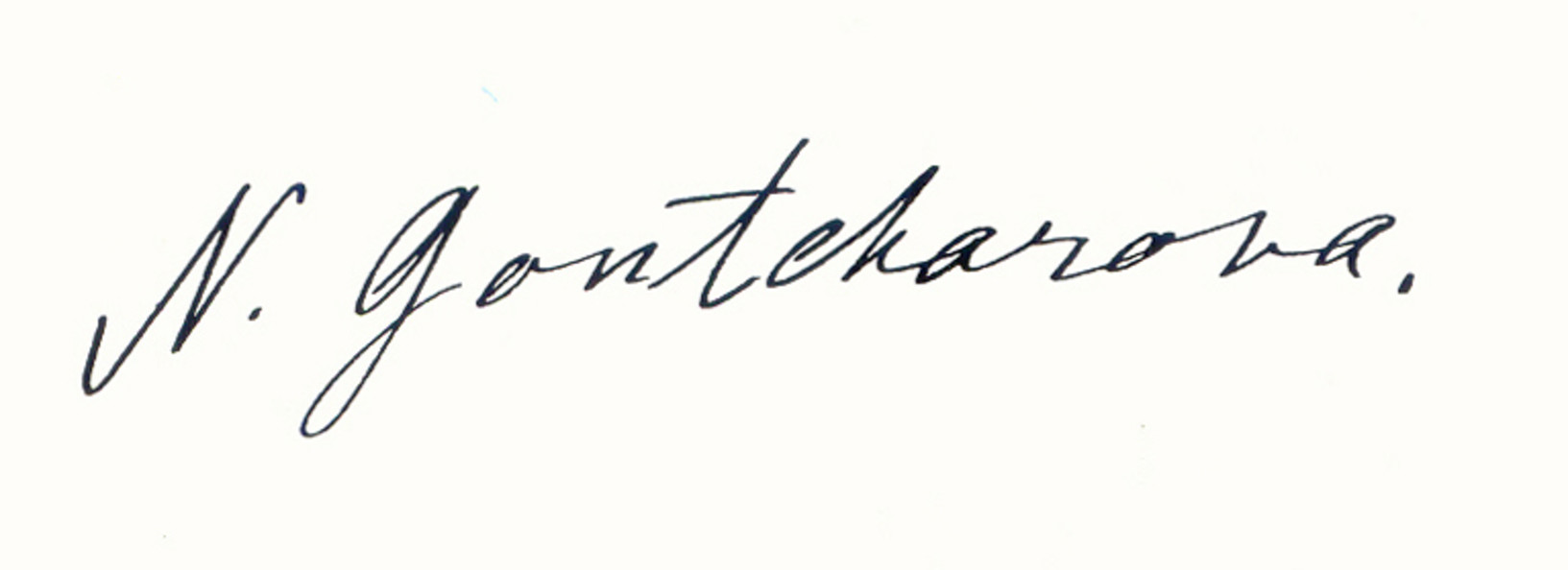

Natalia Goncharova, combining her experience of Western modernism with ancient and medieval Russian religious and folk imagery, suggested a new way to approach Russian culture in her art. After working “in the style of” futurists, cubists, and fauvists, Goncharova shifted her focus of interests to arts and crafts of the Russian village. In the country, according to her manifesto from 1913, an artist can find intrinsic national forms that date back to prehistoric times and then evolve through the religious Middle Ages to the present days. She recognized the uniqueness and autonomy of medieval Christian Orthodox icons and religious book illustrations and she saw many paths for its continuation in modern times and particularly, in folk art.
Starting from 1914, Goncharova and her lifelong partner Mikhail Larionov worked on costumes and decorations for Sergei Diaghilev’s Saisons Russes and traveled with his troupe across Europe until they finally settled in Paris in 1919. When in France, she also developed her skills as a book illustrator, working on more than a dozen project by the late 1920s. In the 1920s and 1930s, she continued to paint and teach, but her fame started to fade; she faced considerable material and psychological difficulties after Diaghilev’s circle fell apart after his death in 1929.
She survived the occupation of Paris during the Second World War, but throughout the 1940s and first half of the 1950s, Larionov and Goncharova lived in poverty (in her letters of this period she complains about the cold and once even a “flood” from snow falling from the roof in her studio, forcing her to work in her small apartment), working on rare occasional ballet and opera projects. In the second half of the 1950s, interest in the legacy of the avant-garde artists began to revive, especially after the exhibitions of Diaghilev in Edinburgh and London in 1954, as well as after a number of retrospective exhibitions dedicated to the founders of the avant-garde: “The origins of twentieth-century art” (Paris, 1960) and “Russian artists of the Paris school” (Paris, 1961). In the 1950s, Goncharova received several invitations to create murals in a Christian Orthodox church and to work on book illustration projects. Some of these projects remained unfinished due to the lack of the commissioners’ budget and Goncharova’s subsequent death in 1962.
